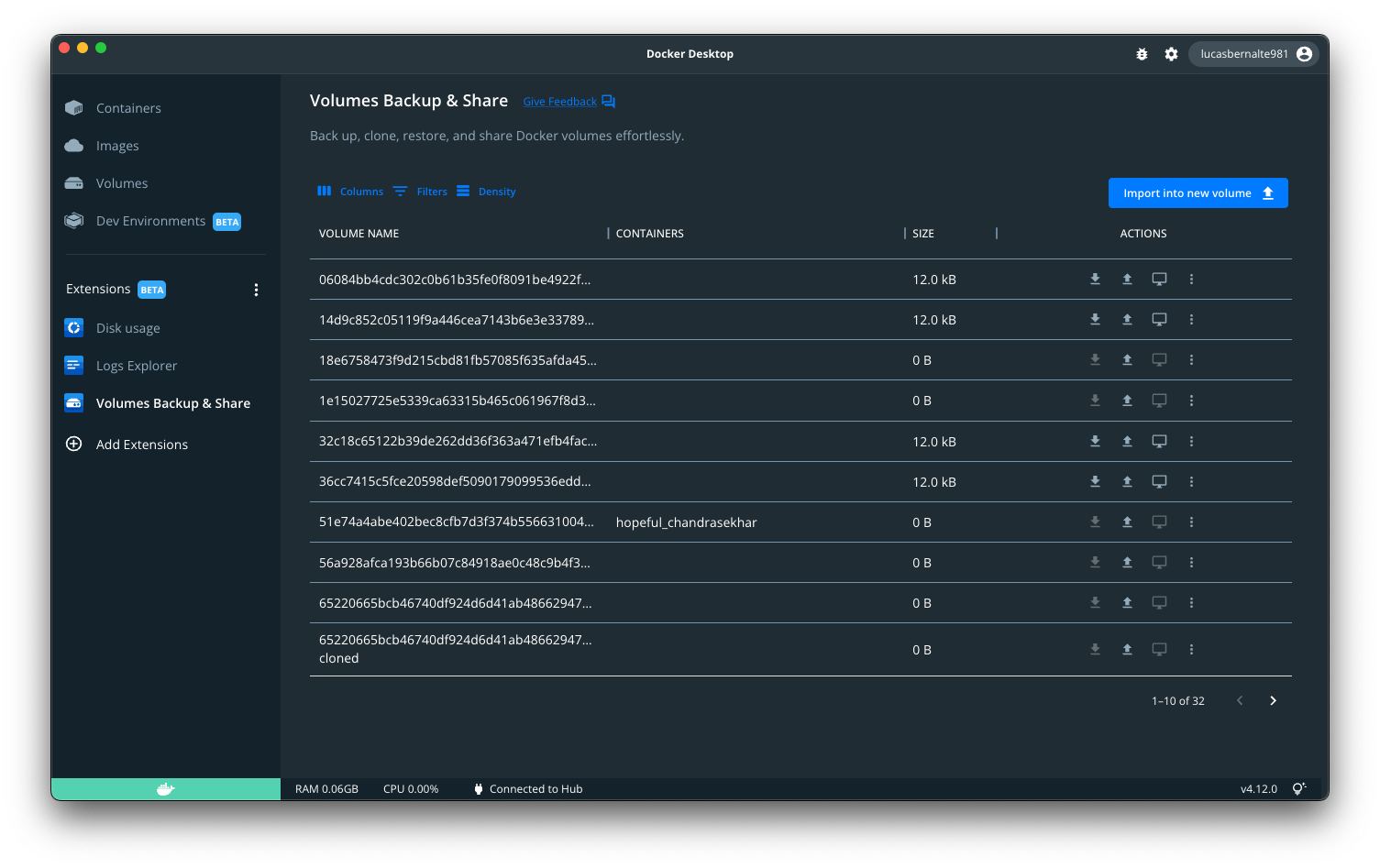Signed-off-by: Guillaume Tardif <guillaume.tardif@gmail.com> |
||
|---|---|---|
| .github | ||
| client | ||
| docker/images | ||
| docs/images | ||
| e2e/electron | ||
| ui | ||
| vm | ||
| .dockerignore | ||
| .gitignore | ||
| Dockerfile | ||
| LICENSE | ||
| Makefile | ||
| README.md | ||
| docker-compose.yaml | ||
| icon.svg | ||
| metadata.json | ||
README.md
Volumes Backup and Share Extension
[!IMPORTANT] The functionality in this extension is now available as a Beta feature in the Volumes tab of Docker Desktop in versions 4.29.0 and above. This extension will be deprecated once the features are out of Beta. Learn more
🚀 This extension was originally created by Felipe Cruz
Features
- Export a volume:
- To a compressed file in your local filesystem
- To an existing local image
- To a new local image
- To a new image in Docker Hub (or another registry)
- Import data into a new container or into an existing container:
- From a compressed file in your local filesystem
- From an existing image
- From an existing image in Docker Hub (or another registry)
- Transfer a volume via SSH to another host that runs Docker Desktop or Docker engine.
- Clone a volume
- Empty a volume
- Delete a volume
Installation
The recommended way to install the extension is from the Marketplace in Docker Desktop.
You could also install it with the Docker Extensions CLI, targeting either a published released (e.g. 1.0.0) or branch (e.g. main):
docker extension install docker/volumes-backup-extension:main
Run Locally
Clone the project
git clone https://github.com/docker/volumes-backup-extension.git
Go to the project directory
cd volumes-backup-extension
Build the extension
docker build -t docker/volumes-backup-extension:latest .
Install the extension
docker extension install docker/volumes-backup-extension:latest
Developing the frontend
cd ui
npm install
npm start
This starts a development server that listens on port 3000.
You can now tell Docker Desktop to use this as the frontend source. In another terminal run:
docker extension dev ui-source docker/volumes-backup-extension:latest http://localhost:3000
In order to open the Chrome Dev Tools for your extension when you click on the extension tab, run:
docker extension dev debug docker/volumes-backup-extension:latest
Each subsequent click on the extension tab will also open Chrome Dev Tools. To stop this behaviour, run:
docker extension dev reset docker/volumes-backup-extension:latest
